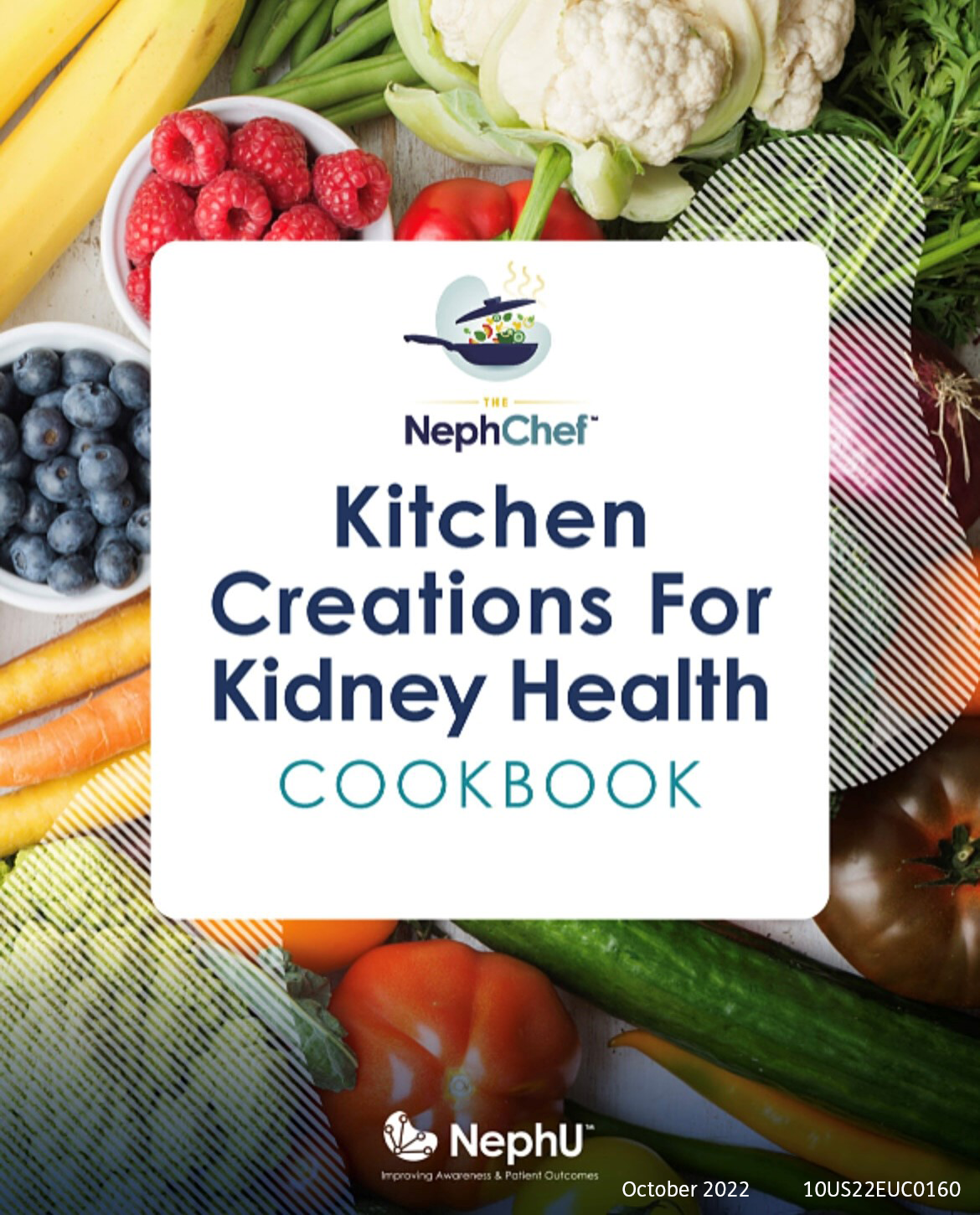Kitchen Creations for Kidney Health: Part 2
This post is sponsored by Otsuka America Pharmaceutical, Inc. However, all opinions are my own.
Disclaimer: Please be advised that some of these foods may contain wheat/gluten, milk, eggs, peanuts, tree nuts, fish, shellfish, soy or other foods that may cause allergic reactions in some people. Please contact your healthcare provider if you are concerned about food allergies or other food-related reactions such as food sensitivities.
As a Registered Dietitian (RD) who works with people with chronic kidney disease (CKD), I see many people who have been diagnosed with polycystic kidney disease (PKD). If you’re not familiar with this condition, PKD is a genetic disease in which cysts grow on the kidneys. The most common type of PKD is autosomal dominant polycystic kidney disease (ADPKD), which is an inherited condition, accounting for approximately 90% of all PKD cases. Children of a parent with ADPKD have a 50 percent chance of developing the disease, which makes getting screened and monitored especially important for people with a family history of this condition. Your primary care physician can refer you to a nephrologist who will look at the size of your kidneys, the number of cysts, and can even help try to slow progression of the disease through management strategies. Depending on the severity and progression rate of the disease, ADPKD and PKD can lead to kidney failure requiring dialysis or a kidney transplant.
Medical care is essential but living an active lifestyle and eating healthy are also important for optimal management of PKD, including ADPKD. Although diet and exercise alone cannot prevent or cure the disease, it can help to slow the progression to kidney failure.
One of the most important nutrition guidelines for people with ADPKD is limiting sodium (salt) intake. This helps to keep blood pressure within reasonable limits, which can help keep excess fluid from accumulating in the kidneys. Cooking at home using low sodium ingredients is a good habit to try to implement, as some restaurant foods and fast foods have additional sodium in their recipes. As a good rule of thumb, it is best to aim for less than 1,500 mg of sodium per day. Utilizing other seasonings like fresh herbs, dried herbs and spices, red pepper flakes, flavored vinegars, lemon juice, and lime juice can be great ways to add flavor. For example, this Roasted Cauliflower Tacos recipe from the Kitchen Creations for Kidney Health cookbook uses paprika, cumin and taco seasoning and only has 72mg of sodium per serving!
Roasted Cauliflower Tacos
Kitchen Creations for Kidney Health cookbook cover
Limiting protein intake is also an important step because some of the densest sources of dietary protein can come from animal products, such as meat, poultry, and seafood. Although protein is also found in eggs and dairy products, as well as plant foods such as beans, lentils, soy, nuts, and seeds, plant-based diets have been found to be especially helpful in managing kidney disease. One of my favorites is this Warm Brussels Sprouts, Walnut & Cranberry Salad, which has 4g of protein per serving. Some people choose to eliminate animal protein altogether, also known as a vegan diet, while others may choose to limit their portions of animal protein. Some of these reduced protein eating patterns could include a vegetarian diet, the Mediterranean diet, or the DASH diet.
Warm Brussels Sprouts, Walnut & Cranberry Salad
Dark Chocolate Chia Seed Pudding
Potassium and phosphorus are two other nutrients that may be a concern for those living with ADPKD, depending on the stage of the disease and the person’s blood work. For people with kidney disease, it’s important to have the right amount of potassium and phosphorus, as potassium is needed to help your nerves and muscles work properly and extra phosphorus may cause body changes that can pull calcium out of your bones, making them weak. To help limit these concerns, I recommend this Dark Chocolate Chia Seed Pudding for anyone who needs to satisfy their sweet tooth. And guess what? It only has 217mg of potassium and 121mg of phosphorus. How great!
Overall, it can be tricky to navigate a renal diet so I always recommend speaking with an RD to help clarify any questions you may have. One resource I personally recommend is the Kitchen Creations for Kidney Health cookbook which contains kidney-friendly recipes by and for those living with kidney disease. These recipes have been vetted by professionals who are knowledgeable about the recommended dietary guidelines for kidney diseases like ADPKD. The cookbook is digital, which makes it not only convenient, but also easy to navigate the various recipes. From appetizers to entrees to side dishes, it has a variety of healthy recipes that taste delicious, which means both family members with and without kidney diseases can enjoy them. It can also be a way to bring people together and encourage those living with kidney disease to speak to their families about their health history and the risk of inheritance of the condition. If you’re interested in contributing to the Kitchen Creations for Kidney Health Cookbook, go to NephU.org/recipe-submission.







